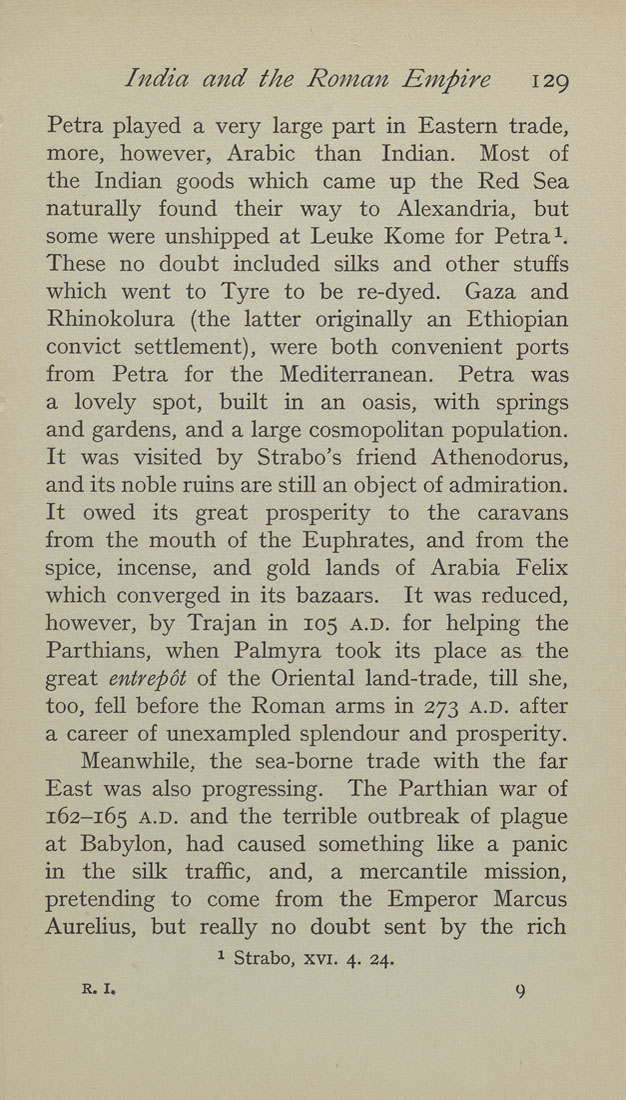India and the Roman Empire 129
Petra played a very large part in Eastern trade,
more, however, Arabic than Indian. Most of
the Indian goods which came up the Red Sea
naturally found their way to Alexandria, but
some were unshipped at Leuke Kome for Petra ^.
These no doubt included silks and other stuffs
which went to Tyre to be re-dyed. Gaza and
Rhinokolura (the latter originally an Ethiopian
convict settlement), were both convenient ports
from Petra for the Mediterranean. Petra was
a lovely spot, built in an oasis, with springs
and gardens, and a large cosmopolitan population.
It was visited by Strabo's friend Athenodorus,
and its noble ruins are still an object of admiration.
It owed its great prosperity to the caravans
from the mouth of the Euphrates, and from the
spice, incense, and gold lands of Arabia Felix
which converged in its bazaars. It was reduced,
however, by Trajan in 105 a.d. for helping the
Parthians, when Palmyra took its place as the
great entrepot of the Oriental land-trade, till she,
too, fell before the Roman arms in 273 a.d. after
a career of unexampled splendour and prosperity.
Meanwhile, the sea-borne trade with the far
East was also progressing. The Parthian war of
162-165 A.D. and the terrible outbreak of plague
at Babylon, had caused something like a panic
in the silk traffic, and, a mercantile mission,
pretending to come from the Emperor Marcus
Aurelius, but really no doubt sent by the rich
1 Strabo, xvi. 4. 24.
R. I. 9
|








